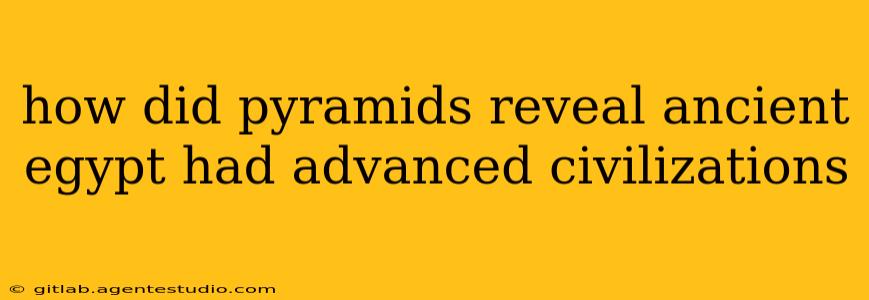The majestic pyramids of Egypt stand as silent testaments to a civilization possessing astonishing advancements in engineering, mathematics, astronomy, and social organization. Their very existence challenges our modern understanding of what was possible thousands of years ago, revealing a sophisticated society far beyond what many initially imagine. Let's delve into the specific aspects of pyramid construction that illuminate the remarkable capabilities of ancient Egypt.
Engineering Marvels: Precision and Scale
The sheer scale of the pyramids is breathtaking. The Great Pyramid of Giza, for example, contains over 2.3 million blocks of stone, each weighing an average of 2.5 tons. Moving, precisely positioning, and fitting these colossal blocks required an intricate understanding of mechanics, logistics, and manpower management far exceeding the capabilities attributed to "primitive" societies. The precision of the construction is also striking; blocks fit together with minimal gaps, showcasing mastery of stone-cutting, transportation, and placement techniques. The level of accuracy in aligning the pyramids with cardinal directions also points to advanced surveying skills and astronomical knowledge.
Advanced Tooling and Techniques
While the exact methods remain a subject of ongoing debate, the construction of the pyramids undoubtedly required sophisticated tooling and techniques. Evidence suggests the Egyptians utilized copper tools, possibly with abrasive materials like dolerite, to shape and carve the stone blocks. The creation of such smooth, precisely cut stones requires a deep understanding of metallurgy and material science. Furthermore, the ramps, levers, and rollers used to maneuver the immense blocks necessitate a significant level of engineering ingenuity and organizational prowess. Recent discoveries continue to shed light on the ingenuity of their techniques, challenging long-held assumptions about their capabilities.
Mathematical and Astronomical Knowledge
The pyramids are not just impressive feats of engineering; they also demonstrate a high level of mathematical and astronomical sophistication. The precise angles, proportions, and alignment of the pyramids indicate a detailed knowledge of geometry and trigonometry. The relationship between the pyramid's dimensions and the mathematical constant pi suggests a conscious incorporation of advanced mathematical concepts into their design.
Celestial Alignment and Calendrical Systems
The precise alignment of the pyramids with cardinal directions and celestial events also points to advanced astronomical observations. It's believed that the pyramids were strategically positioned to align with specific stars or constellations, demonstrating a sophisticated understanding of the cosmos and their cyclical movements. This alignment is not accidental; it suggests a calendar system that relied on astronomical observations, facilitating agricultural practices and other societal functions.
Social Organization and Resource Management
The construction of the pyramids required a massive, coordinated effort involving tens of thousands of people over decades. This immense undertaking was only possible due to a highly organized society with a centralized government capable of mobilizing resources, managing labor, and overseeing the project's execution. The existence of such a complex social structure reveals a level of political and administrative sophistication far beyond the capabilities of simpler societies.
Centralized Planning and Resource Allocation
The pyramids represent a colossal investment of resources—human labor, materials, and financial capital. This enormous undertaking points to a system of centralized planning and resource allocation capable of supporting such a massive project while sustaining the needs of the broader population. The organization and management skills required are testament to their advanced societal structure.
Conclusion: Redefining "Ancient"
The pyramids of Egypt are not simply tombs; they are multifaceted monuments that provide invaluable insight into the capabilities of an ancient civilization. Their construction reveals advancements in engineering, mathematics, astronomy, and social organization that far surpass the often-simplified narratives of "ancient" societies. Studying these wonders allows us to gain a greater appreciation for the ingenuity, planning, and sophisticated knowledge possessed by the ancient Egyptians, and challenges us to reassess our understanding of technological and societal advancements across history. Further research and exploration will undoubtedly unveil even more about the complexity and sophistication of this remarkable civilization.

